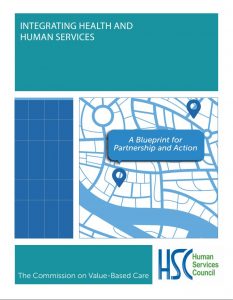New Series Highlights Reframing Partners
May 3, 2018We’re beginning a new series featuring leaders in the human service field who are pioneers implementing the Building Well-Being Narrative in their communities.
 New York City Reframes
New York City Reframes
This week, we talked to Allison Sesso, Executive Director, New York’s Human Services Council (HSC)—The voice of the human services community. HSC has been an early adopter and advocate for reframing, having incorporated reframing into its own communications, offered reframing workshops and presentations to its members, and spread the word about reframing through its newsletters.
HSC reframed its mission statement in 2016 to highlight human potential and the life cycle: HSC strengthens New York’s nonprofit human service sector, ensuring all New Yorkers, across diverse neighborhoods, cultures, and generations reach their full potential.
Sesso also penned a September 14, 2017 Chronicle of Philanthropy piece, using the Construction Metaphor to draw an analogy between rebuilding the infrastructure of disaster-affected communities and rebuilding the well-being of its people: “[G]overnments and businesses will spend billions of dollars rebuilding infrastructure. But it is the nonprofit world that will play a key role in rebuilding the lives of those affected by the devastating hurricanes.”
 HSC incorporated reframing into its campaign, Strong Nonprofits For a Better New York. The tools, including the Talking Points for the Governor’s Office, artfully embed the Building Well-Being Narrative.
HSC incorporated reframing into its campaign, Strong Nonprofits For a Better New York. The tools, including the Talking Points for the Governor’s Office, artfully embed the Building Well-Being Narrative.
Most recently, HSC released its “Value-Based Care Commission Report: Integrating Health and Human Services” which incorporates the Narrative and Sesso even referenced the construction metaphor during the release (around minute 7).
HSC Provides Insights
Sesso graciously spent time with us to describe HSC’s reframing journey.
Q: What prompted HSC to join the reframing human services initiative?
Sesso: I had just started talking to the HSC team about how the sector had a marketing problem and within a short period of time saw information about the reframing initiative. It was impeccable timing!
Q: What was the biggest challenge in securing Board and/or stakeholder buy-in, and how did you overcome it?
Sesso: HSC didn’t face push-back or resistance. It wasn’t a big investment – a staff member folded reframing into her portfolio to bring the content to our materials and to introduce the approach to our network of members and coalition partners. We invited the National Reframing Initiative to make a presentation on reframing at a membership meeting, and it seemed to resonate. When talking about the importance of this new approach, we explain that research shows our traditional way of talking about human services undermines our own arguments, and people get it.
Q: How did HSC successfully achieve sustainable implementation?
Sesso: A small staff helps (HSC is 8 people). One staff member owns our reframing work and is responsible for reminding us to get the language right in our communications and that we use it across the board. Reframing our mission statement gave us an opportunity to engage in a conversation with our Board about the importance of changing how we talk about our work. We also make reframing a constant item on our staff meeting agendas.
Q: How has reframing positively impacted HSC’s communications and policy efforts?
Sesso: Reframing is one piece of a larger HSC strategy to change perceptions and elevate understanding of the sector and what it does. We know we’ve been successful because there is more appreciation of the sector — legislators speak more eloquently about the sector and its relationship with government and its fiscal challenges and reporters follow-up and create a narrative that those outside the sector are repeating. It has also helped us describe human services as architects of well-being — the social determinants of health — that integrate with health care, which resonates well with that community.
Q: As you were learning to reframe, what resources did you find particularly useful?
Sesso: We found the video of people struggling to explain what human services are, the swamp analogy, and webinars very helpful. Additionally, having the National Reframing Initiative staff available, helpful and responsive is invaluable.
Q: What are your plans for reframing as an organization, particularly with engaging HSC members?
Sesso: This is an ongoing initiative that must continue. I’d like to figure out how to build language that explains how human services are funded — primarily with government contracts for services — and get rid of the public’s “charity” default mindset. I genuinely believe we collectively have a marketing problem that reframing fixes, and so we must implement it even more widely to enable human service organizations to be effective political players.
Q: What advice would you give to an organization that is just starting to reframe?
Sesso: Drive the initiative with early buy-in from the top and a staff member to own and implement reframing, with continual connection to leadership.
Tell Us About Your Experience!
We need to hear from you, too! To enable us to collect best practices for the sector and share your organization’s successes, please send your organization’s answers to any or all of the above questions to Bridget Gavaghan, Director of the National Reframing Initiative.

